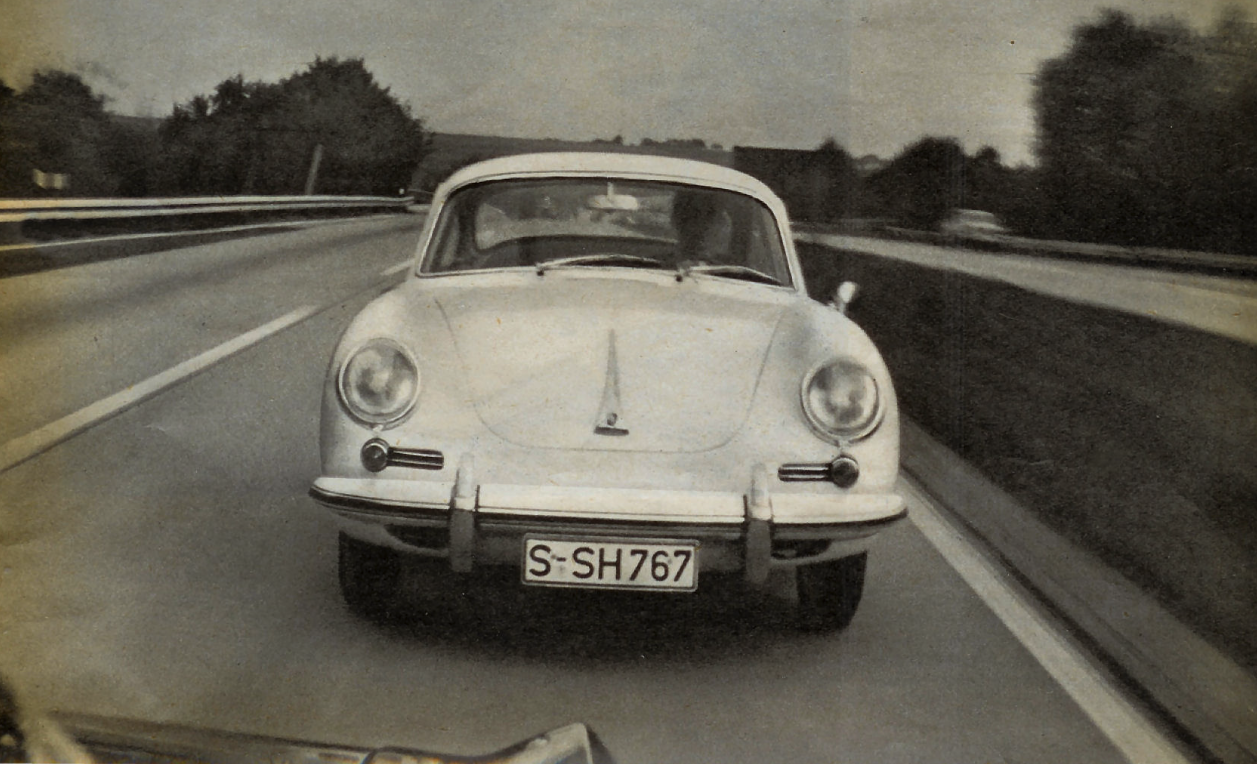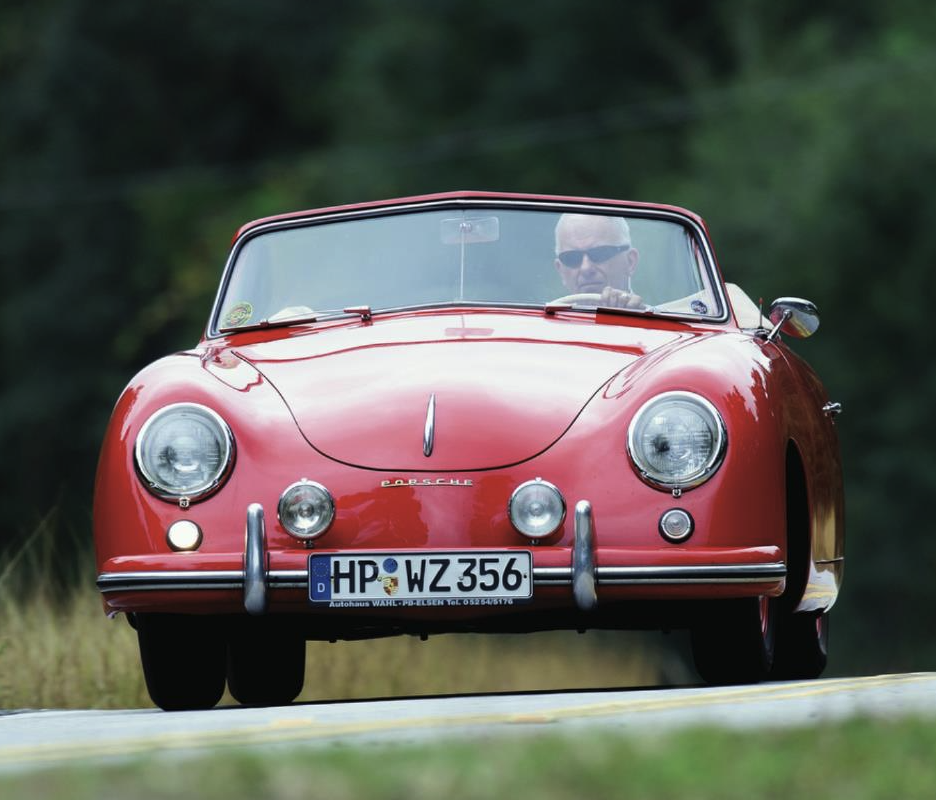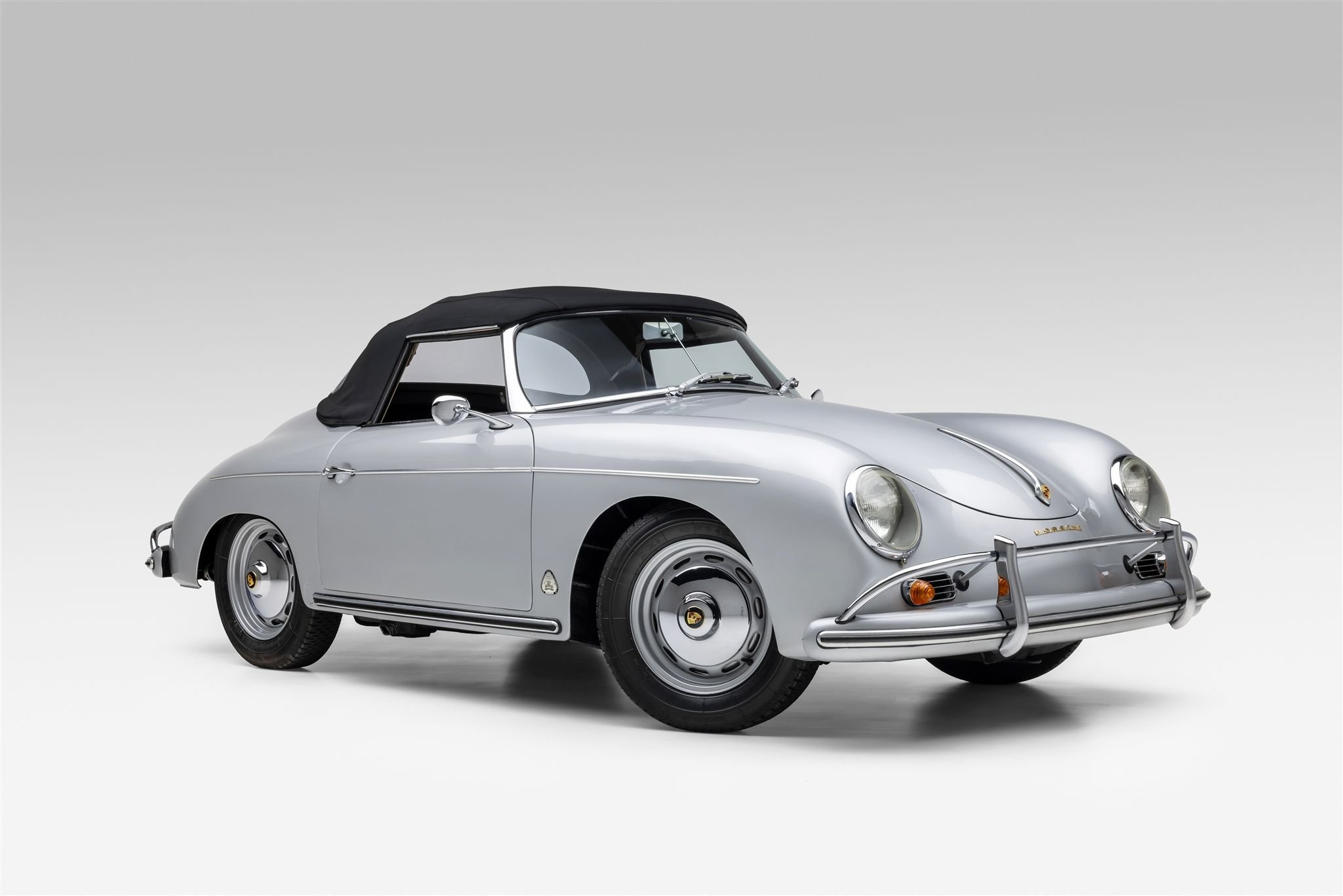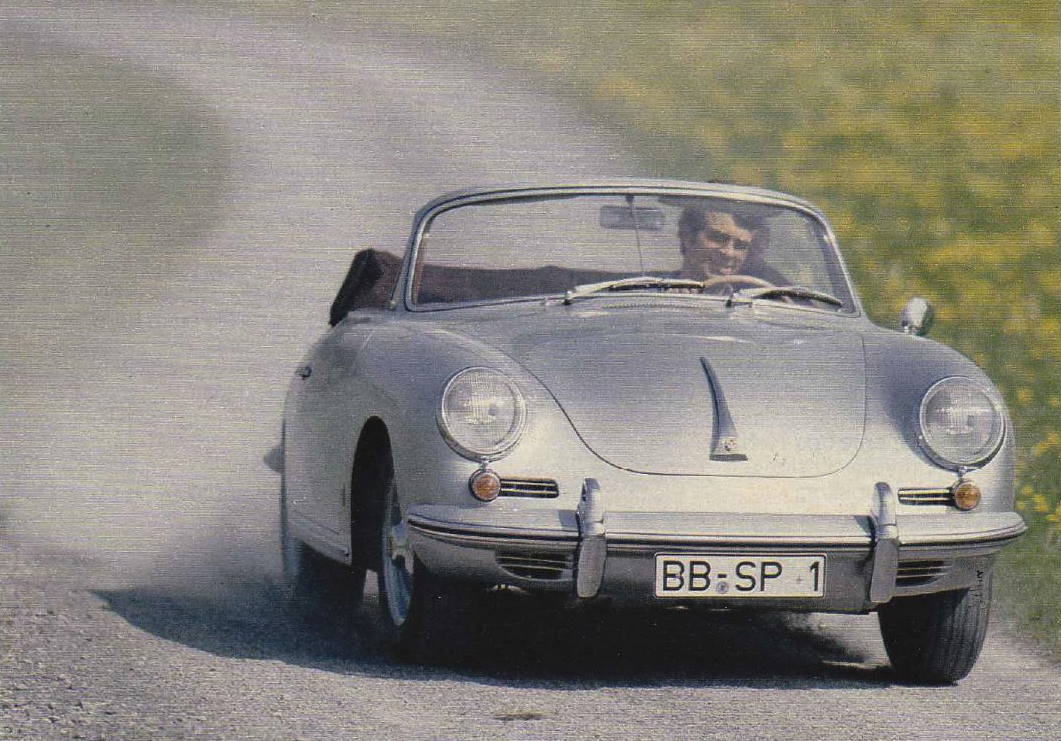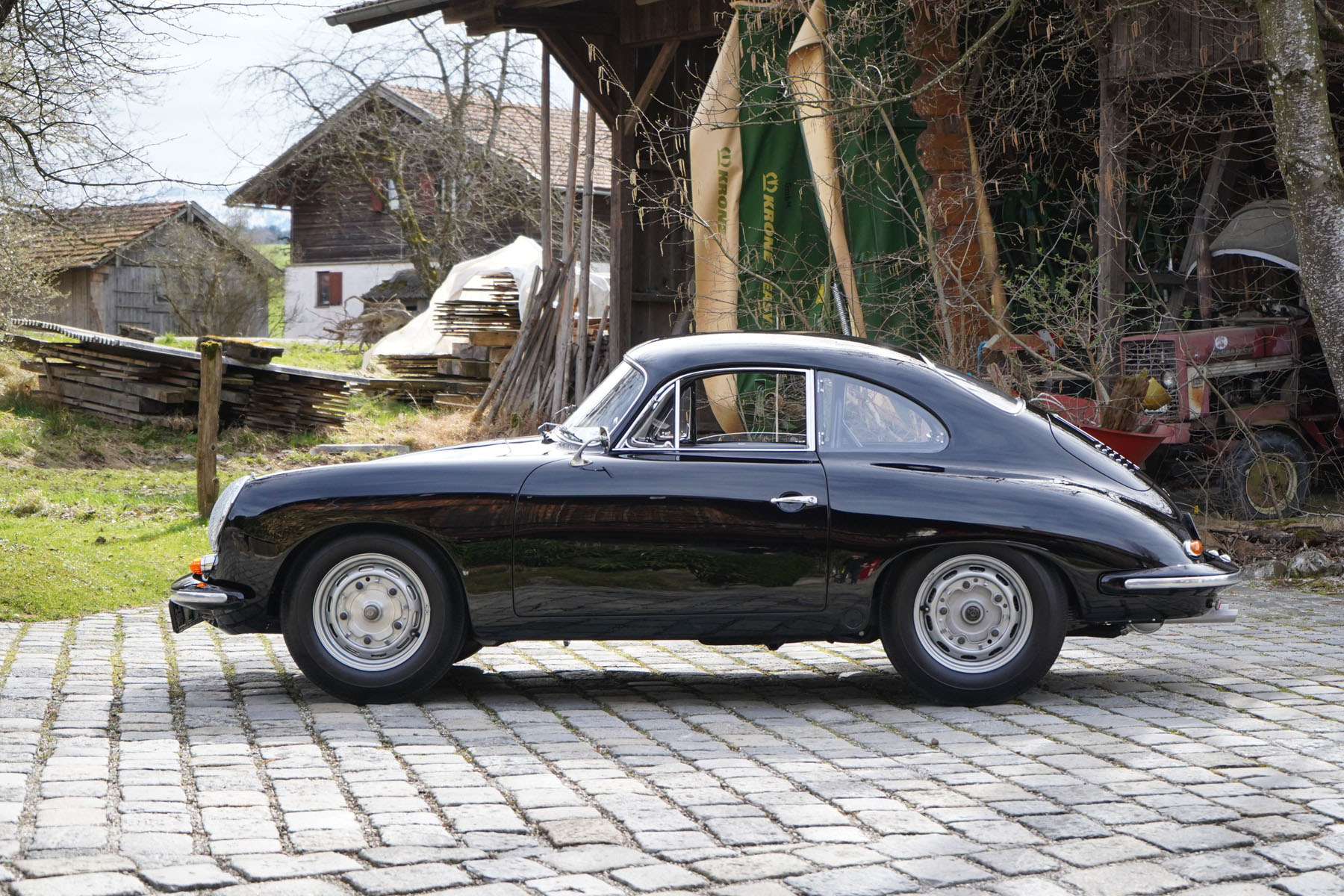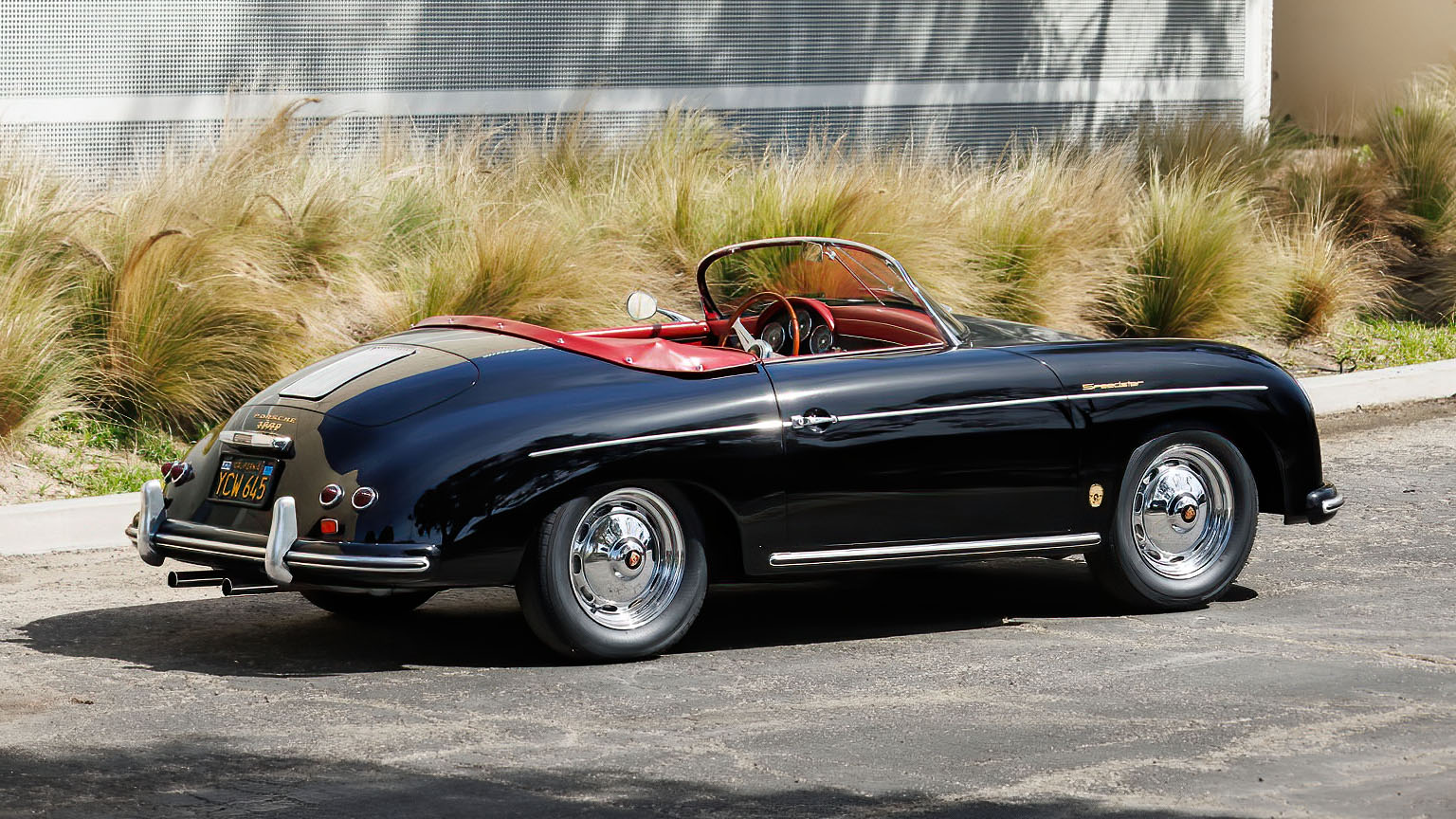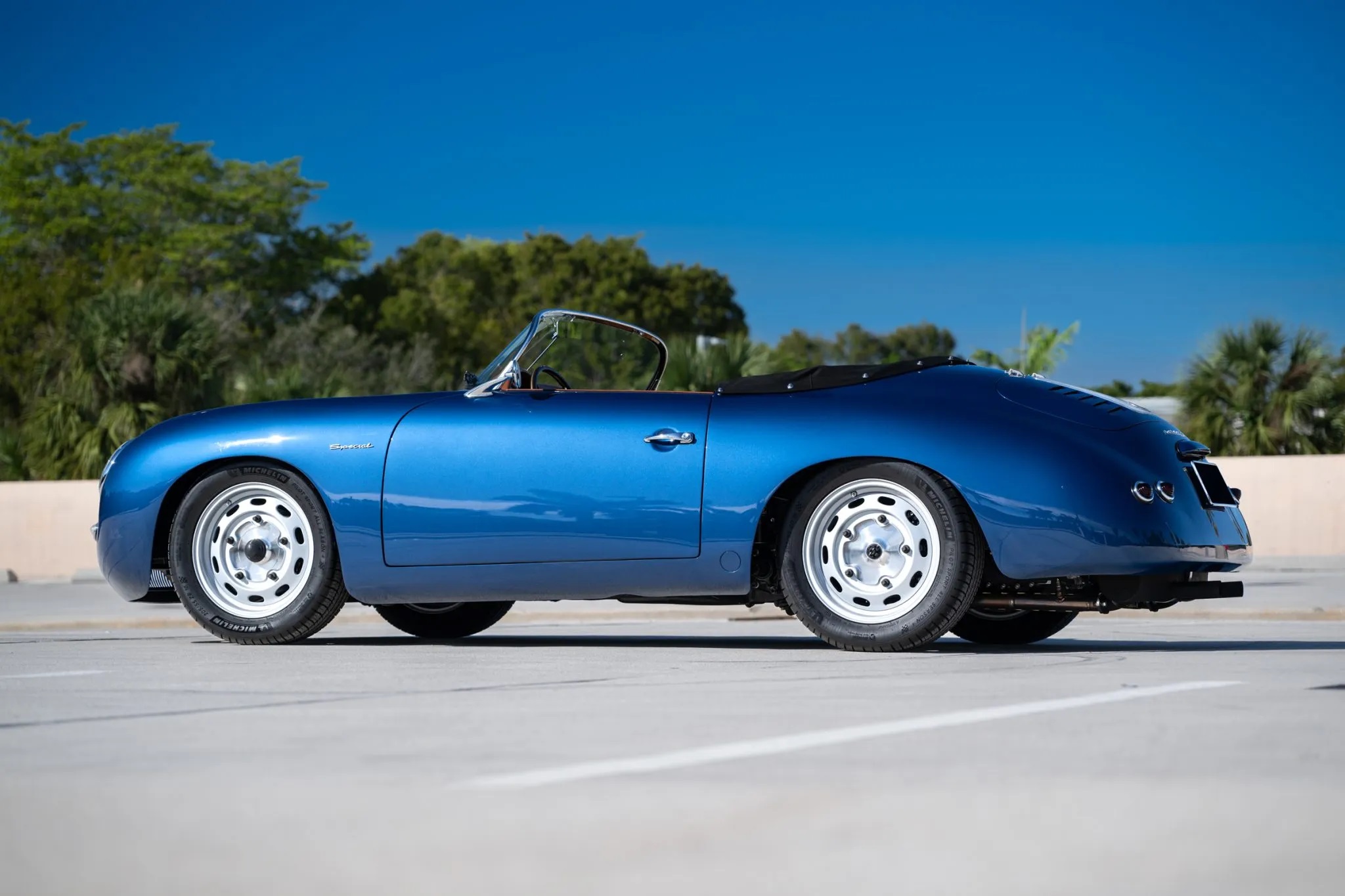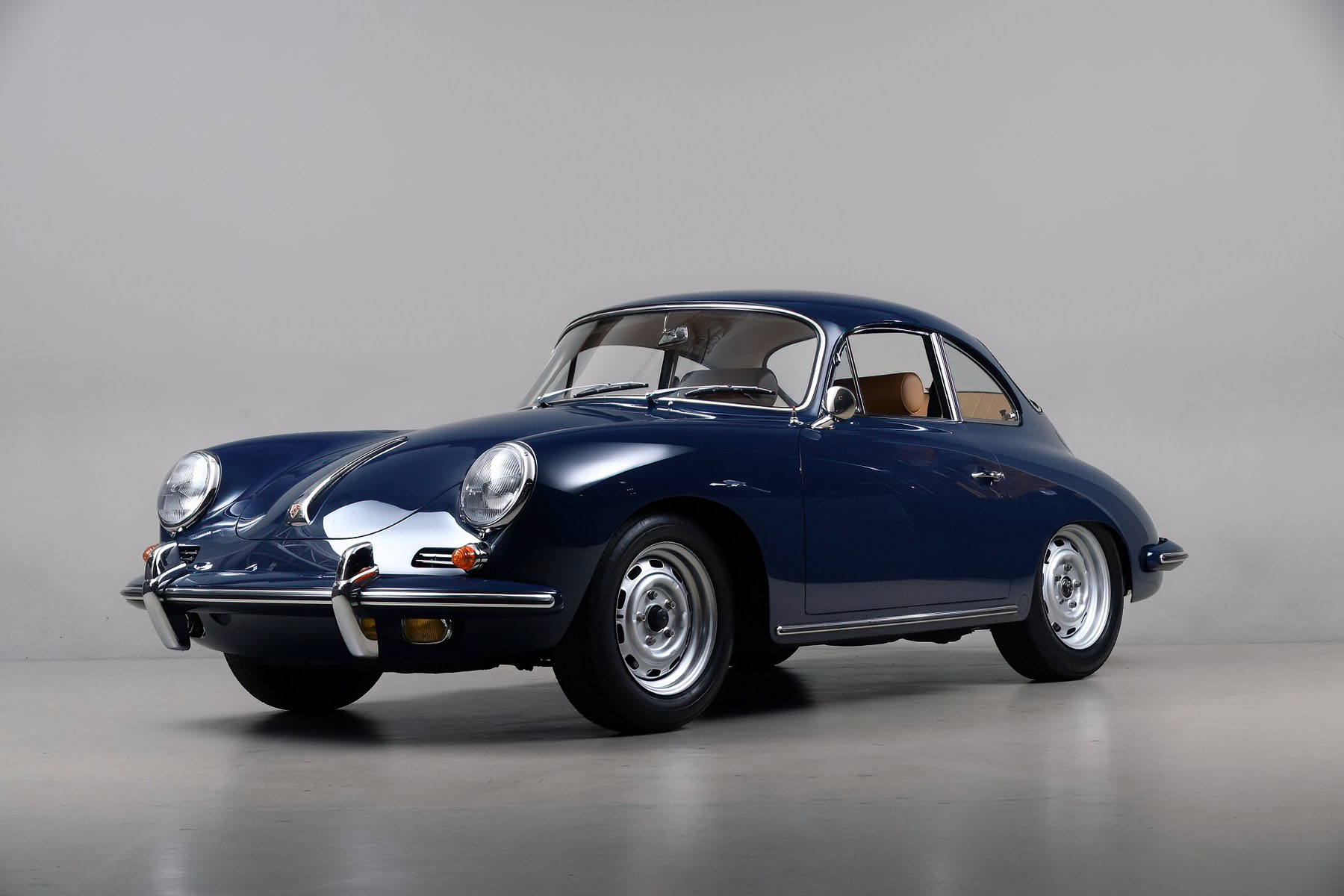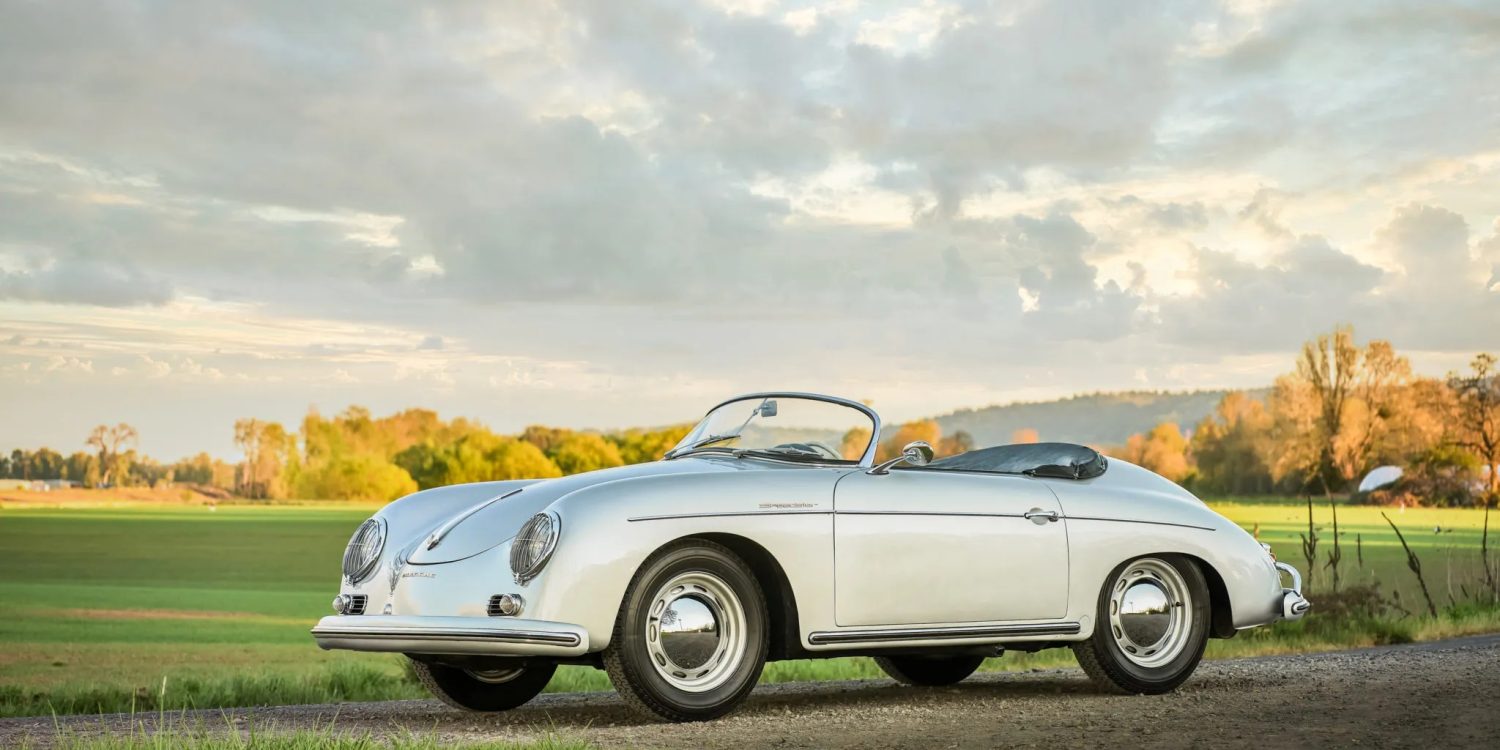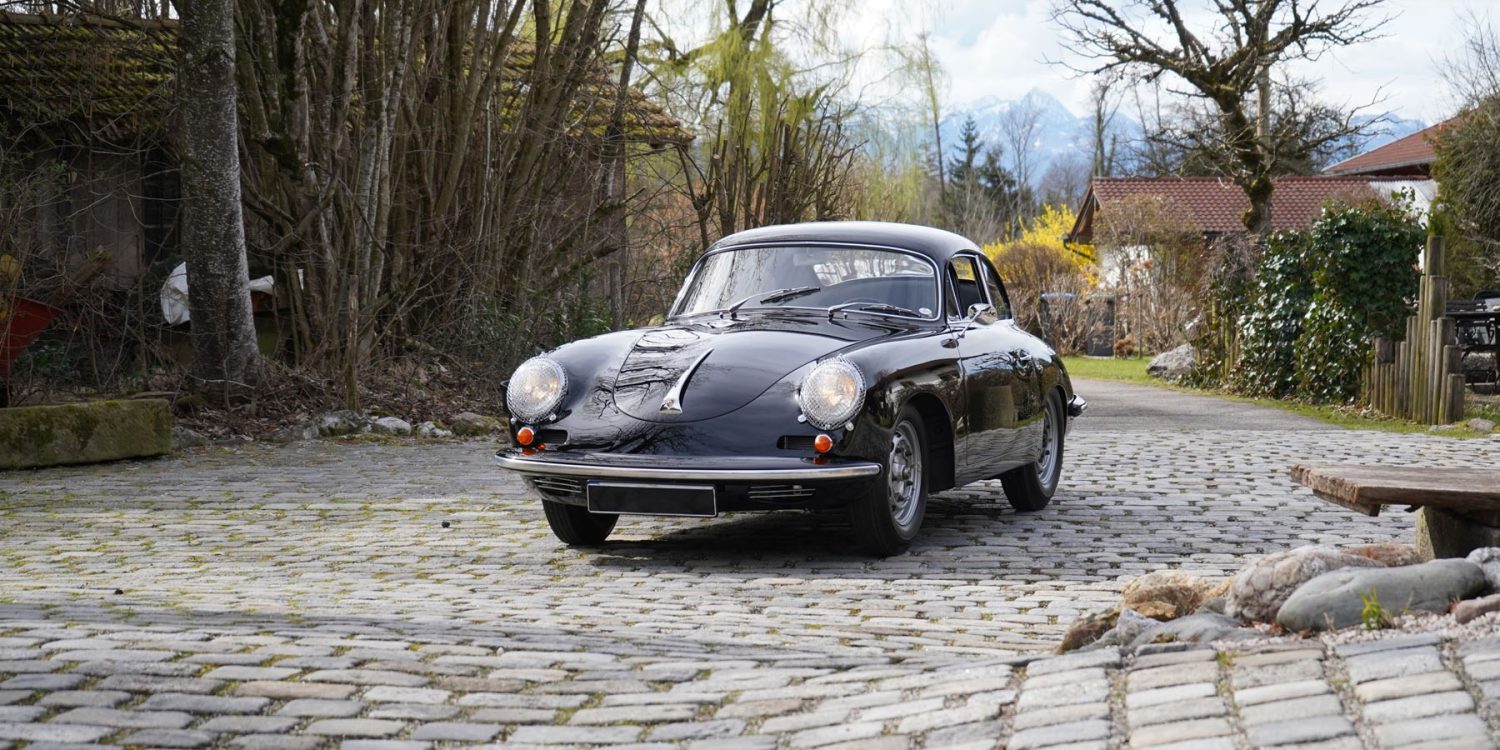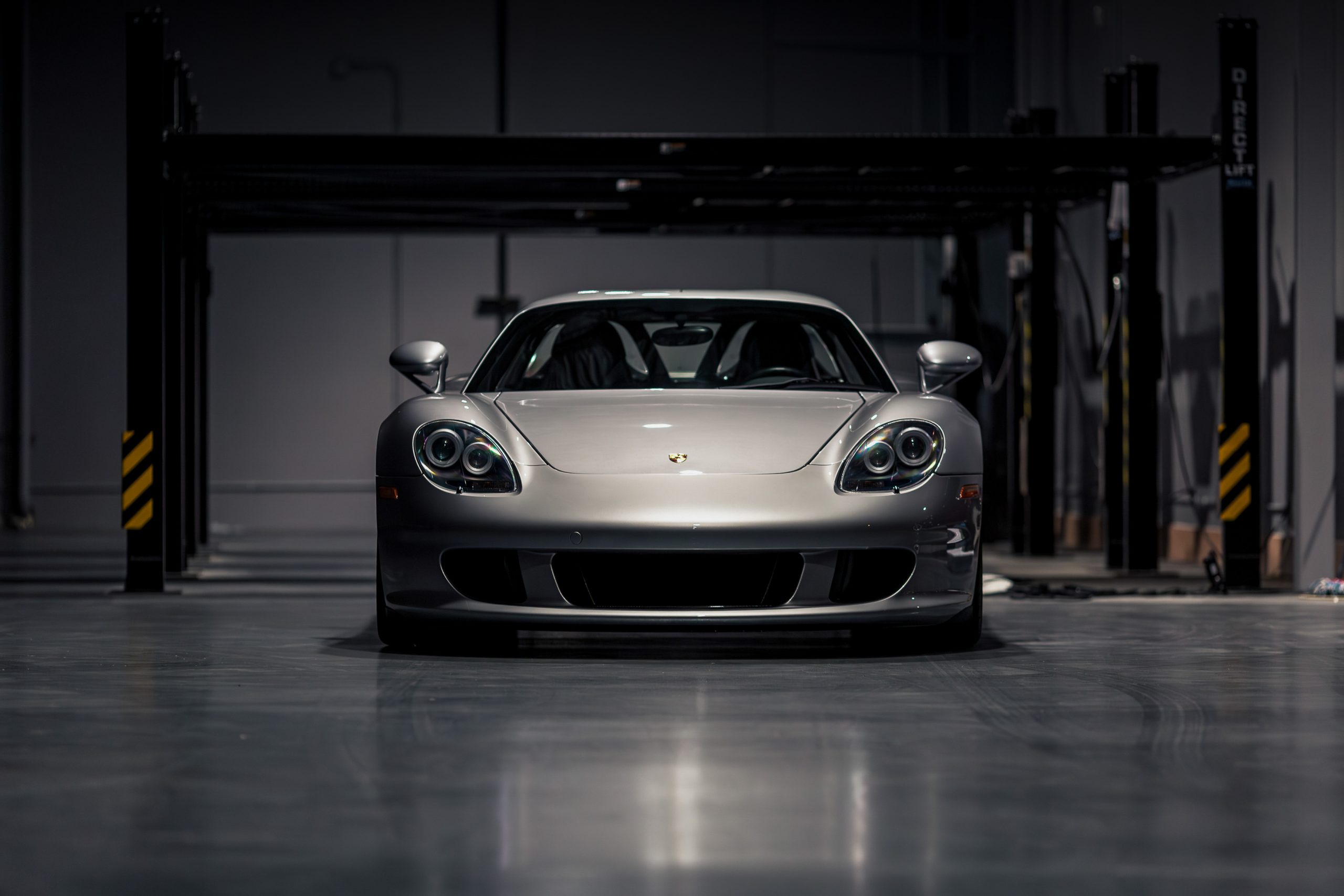Porsche 356 Buyer's Guide
Buying a Porsche 356? Our (Seriously In-Depth) Buyer’s Guide Covers Key Models, Potential Issues, Market Values, Expert Tips, What To Expect & MUCH More.
The Porsche 356 is where it all began. As Porsche’s very first production model, the 356 laid the groundwork for everything that followed—engineering excellence, motorsport success, and timeless design. Produced from 1948 to 1965, the 356 evolved across four main series—Pre-A, A, B, and C—each bringing refinements in styling, performance, and drivability. Today, the 356 is one of the most iconic and collectible sports cars in the world, prized for its light weight, engaging dynamics, and historical importance. Whether you're eyeing a delicate early Pre-A or a refined late-production 356C, the car remains a touchstone for enthusiasts and collectors alike.
In this comprehensive Porsche 356 Buyer’s Guide, we cover everything you need to know before making the leap. From understanding the key differences between models like the Speedster, Cabriolet, and Super 90, to identifying known trouble spots in the chassis and drivetrain, this guide is built to give you the expert perspective. We'll dive into market trends, current pricing, ownership realities, and what to look for in service records and restorations—essential knowledge for a car that is now over half a century old.
The Porsche 356 isn’t just a classic—it’s a truly usable vintage sports car that rewards attentive buyers with a driving experience that still feels alive today. Whether you're considering a driver-grade 356B Coupe or a show-ready 356A Speedster, there’s a version of this legend that fits nearly every taste and budget. Read on to learn how to find the right car, avoid the wrong ones, and understand why the Porsche 356 remains one of the most charming and rewarding vintage cars to own.
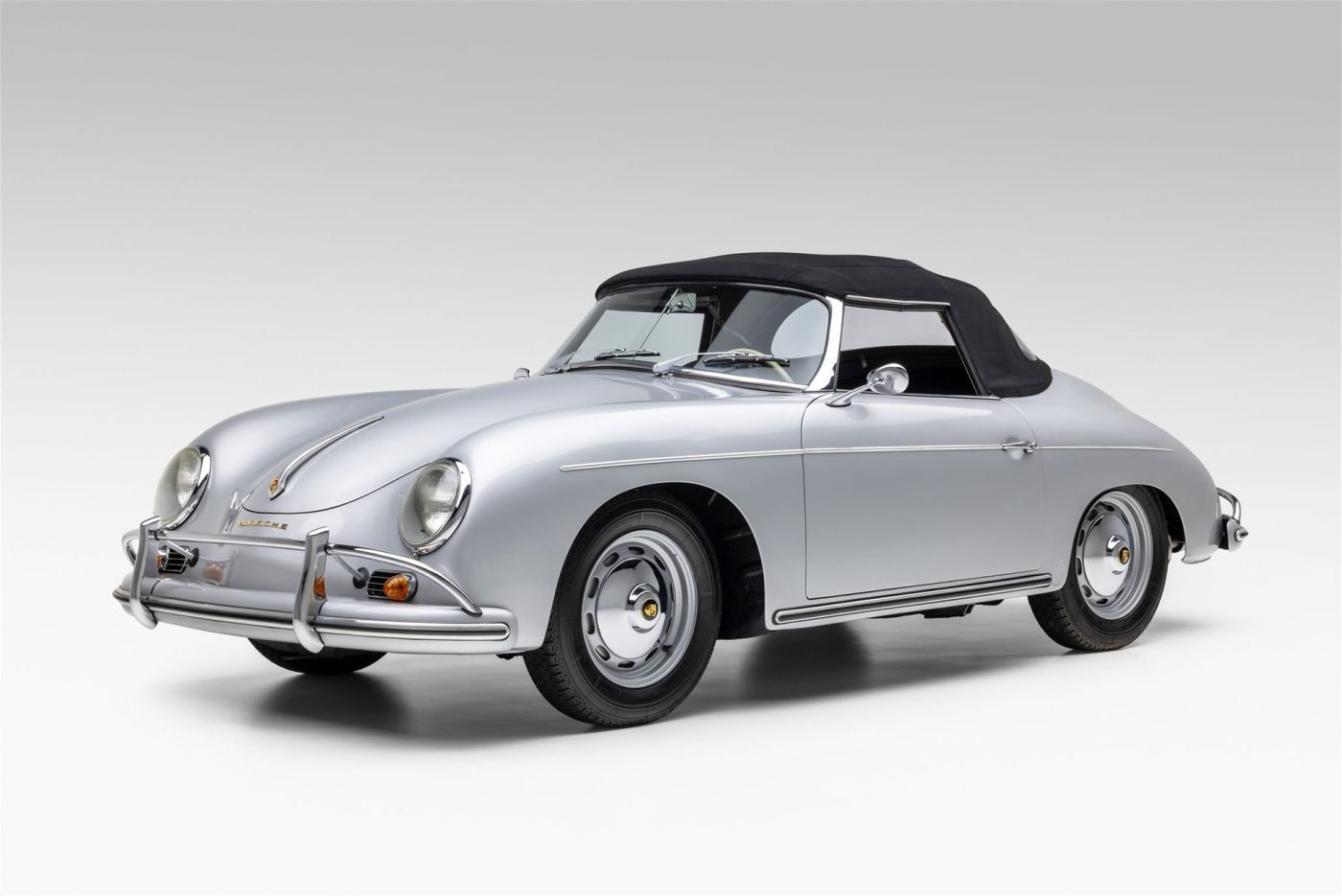
Why the Porsche 356 is a Unique Classic to Buy
The Porsche 356 is a unique classic to buy not only because it marks the origin of the Porsche brand, but because it delivers a driving experience and charm that has endured for more than seven decades. As Porsche’s first production car, the 356 established the company’s reputation for engineering excellence, motorsport prowess, and timeless styling. But this isn’t just a piece of history that sits quietly in a garage. The 356 is a lively, tactile, beautifully balanced machine that was built to be driven—and it still delivers smiles on backroads and concours fields alike. For buyers who want a vintage car with genuine pedigree and usable performance, the 356 checks all the boxes.
What sets the 356 apart from many of its contemporaries is how advanced it feels for its age. Lightweight and nimble, with precise steering and excellent balance, the 356 offers a purity that modern cars simply can’t replicate. Whether you're piloting an early split-window Pre-A or a more developed 356C with disc brakes and a 95-hp SC engine, each variant is mechanically engaging and rewarding to drive. The air-cooled flat-four engines are characterful and reliable when maintained, and thanks to its simple mechanical design, many components are still serviceable or available today.
Additionally, the Porsche 356 market is supported by one of the most passionate and well-organized communities in the collector car world. Clubs, specialists, and parts suppliers make ownership more feasible than many assume, and the cars themselves have proven to be strong long-term investments—especially the rarer models like the Speedster, Convertible D, or Carrera GS. Even standard Coupes and Cabriolets, especially in well-restored or preserved condition, are gaining value as collectors seek early Porsches with authenticity and history.
Finally, there's the intangible: the look, the sound, the feel, and the story. The Porsche 356 isn’t just a car—it’s a passport to the golden era of sports car motoring. It connects its owner to Porsche’s earliest racing victories, Ferry Porsche’s vision for the company, and a time when automotive design emphasized elegance, minimalism, and connection. If you're looking for a classic car that’s equally at home on a winding road, a rally stage, or a concours lawn, the 356 offers a uniquely compelling case—and one that continues to grow stronger with time.
Porsche 356 Models & Variants - A Quick Primer for Potential Buyers On The Variants & Specials To Think About.
We already have ultimate guide to the Porsche 356 so we don't want to repeat everything here. Instead, we will give you a quick primer and summary about the main 356 variants, some of the core model year changes and we will talk about some special editions worth noting as you think about your potential purchase.
Key Variants & Differences
The Porsche 356 evolved significantly throughout its production run from 1948 to 1965, with four major designations—Pre-A, 356A, 356B, and 356C—and a wide range of variants that included Coupes, Cabriolets, Speedsters, Roadsters, and high-performance Carreras. Each generation brought important technical and visual updates, but the essence of the 356—lightweight, rear-engine simplicity—remained remarkably consistent. For collectors and buyers today, understanding the key variants is critical to evaluating desirability, driving character, and market value.
356 "Pre-A" (1948–1955): The earliest 356s, often called “Pre-A,” are the most raw and pure of the breed. These early cars feature split or bent windshields, minimal trim, and a highly simplified interior. Built first in Gmünd, Austria, and later in Stuttgart, these cars used VW-based mechanicals and small-displacement engines (1100cc, 1300cc, 1500cc). Pre-A cars are prized today for their historical importance and aesthetic purity, though they are also among the most delicate and difficult to restore properly. The 356 Pre-A Speedster, introduced in 1954, is perhaps the most iconic of this early period, with its cut-down windshield, minimalist appeal, and focused sporting intent.
356A (1955–1959): The 356A introduced the “T1” and later “T2” body styles with curved windshields and smoother overall styling. Mechanical improvements included updated suspension, better brakes, and a wider selection of engines—1500, 1600, and even the 1600 Super, which produced up to 75 hp. The 356A Speedster remained in production, joined briefly by the Convertible D in 1959, a more civilized open-top model with roll-up windows and better weather protection. This generation represents a sweet spot: it retains much of the early charm, but with improved drivability.
356B (1960–1963): With the 356B came more noticeable styling and performance changes. The “T5” body introduced larger bumpers, revised lighting, and better ergonomics, while the “T6” body (from 1962) featured twin engine grilles and a squared-off hood front. The 356B expanded the lineup with Super 90 models (90 hp), which offered significantly more performance. In 1960, Porsche also introduced the 356B Roadster to replace the Speedster/Convertible D—combining lightweight open-top motoring with improved creature comforts. Buyers who want a blend of vintage looks and more robust driving performance often gravitate toward the 356B range.
356C (1964–1965): The final evolution of the 356 arrived with the 356C, which offered the most refined driving experience of the entire series. Visually similar to the 356B T6, the C’s most important upgrades were under the skin: 4-wheel disc brakes replaced the drums, and the top-of-the-line 1600 SC engine produced 95 hp. By now, the 356 had become a genuinely capable touring car, with mature handling, better braking, and the most powerful engines yet. The 356C is generally considered the most livable 356 for regular driving, especially for those not chasing concours originality.
Carrera Models (1955–1965): Porsche also produced high-performance “Carrera” variants throughout the A, B, and C generations. These cars featured the complex and race-bred four-cam “Fuhrmann” engines, offering significantly more power, unique engineering, and exclusivity.
Available in both coupe and open-top formats, Carrera models were the halo versions of the 356 line and are highly sought-after today—both for their performance and historical importance.
Model Year Changes (1948-1965)
The Porsche 356 evolved gradually over its 17-year production run from 1948 to 1965, with continuous refinements in performance, engineering, and design.
1948–1955: Pre-A Era
The first Porsche 356s were built in Gmünd, Austria, from 1948 to 1950, featuring aluminum bodies and very limited production (just 52 cars). From 1950 onward, production moved to Stuttgart, and the bodies were now made of steel. These early “Pre-A” 356s went through subtle revisions but retained a simple, minimalist design with a split windshield (until 1952) and later a bent windshield. Engines were air-cooled flat-fours derived from Volkswagen, ranging from 1.1 to 1.5 liters.
Key model year changes:
1952: Introduction of the bent windshield and V-shaped hood handle.
1953: First Speedster introduced as a stripped-down, sport-focused roadster for the U.S. market.
1954: Introduction of the 1500 Super (70 hp), offering more spirited performance.
1955–1959: 356A (T1 and T2 Bodies)
The 356A debuted in 1955 as the first significant update to the model. It featured a curved windshield, redesigned dash, and smoother styling. Porsche also introduced a new designation system—356A—with body types T1 (1955–57) and T2 (1958–59). Engine options expanded, including the 1600 and the 1600 Super.
Key model year changes:
1956: Revised electrical system (from 6V to improved 6V), and the Carrera 1500 GS (four-cam) engine introduced.
1958 (T2): New transmission mounts, relocated heater controls, and redesigned door latches. The 356A Convertible D replaced the Speedster, offering better weather protection and daily usability.
1960–1963: 356B (T5 and T6 Bodies)
The 356B brought a more noticeable restyle, with taller bumpers, higher headlights, and bigger grilles. The T5 body (1960–61) retained many of the earlier lines, but the T6 body (1962–63) introduced twin engine grilles, a squared-off hood front, and relocated fuel filler in the front fender. The Super 90 model debuted, offering 90 hp and upgraded performance.
Key model year changes:
1960: Launch of 356B T5. More upright headlights and larger bumpers for improved safety.
1962: Introduction of the T6 body style with design tweaks and improved ergonomics. Roadster replaces Convertible D.
1963: Further updates to instrumentation and interior details. Ongoing improvements to engine cooling and reliability.
1964–1965: 356C
The final iteration, the 356C, was the most refined and mature version of the car. It retained the T6 body from the later 356B but introduced major mechanical upgrades, including 4-wheel disc brakes and the most powerful pushrod engines of the series.
Key model year changes:
1964: Introduction of disc brakes and new 1600C and 1600SC engines. The SC became the highest output pushrod engine at 95 hp.
1965: Final model year for the 356. The 356C remained largely unchanged but is often the most desirable for buyers seeking a daily-drivable classic.

Porsche 356 Market Value & Pricing
When buying a Porsche 356, understanding market values and what drives pricing differences is crucial. Unlike more mass-produced classic cars, the 356 has become increasingly rare over the years, with many original examples lost to rust, modifications, or neglect. This means that well-preserved, documented, and rust-free examples are becoming harder to find, making careful research essential for any buyer. Factors such as model type, originality, rust condition, provenance, and special edition status can significantly impact a 356’s market value. Additionally, with the rising popularity of vintage Porsches, the 356 is no longer an overlooked budget option—it’s a respected classic with strong investment potential.
What Are 356s Worth?
The price of a Porsche 356 varies widely based on condition, originality, model variant, and desirability. Below is a breakdown of Porsche 356 pricing into five categories—ranging from restoration projects to concours-level examples—along with insight into what buyers can expect in each bracket.
Project Cars/Non-Runners
$25,000 - $60,000
At the bottom end of the market are incomplete, rusted, or non-running cars. These vehicles can include early Pre-A models, 356A, or even a 356B coupe with severe corrosion and missing parts. While tempting due to price, restoring one properly can cost $100,000–$250,000+, so these cars are only worth pursuing if the buyer is experienced or has access to skilled restoration shops.
Running / Presentable Projects
$60,000 - $100,000
Mechanically functional but may have tired interiors, older paint jobs, minor rust, and incorrect parts. Think of these as "shabby but usable". Most cars are coupes (356B or 356C), and might have undergone amateur restorations or drivetrain swaps. For some buyers, they offer the best entry into 356 ownership without breaking the bank, but expect future work for sure.
Honest Drivers / Light Restorations
$100,000 - $175,000
This is the sweet spot for many enthusiasts. Cars in this range have been reasonably well cared for or lightly restored over time. They might not be 100% original or matching numbers, but they’re rust-free, tidy, and reliable. Expect strong mechanicals, respectable cosmetics, and decent originality. 356C coupes with disc brakes, 356A coupes in solid condition, and some less rare open cars (like 356B Cabriolets).
Quality Resto / Matching Numbers
$175,000 - $350,000
Professionally restored, matching-numbers examples of desirable variants like the 356 Speedster, Cabriolet, Convertible D, or T6-bodied 356C SC coupes. These cars have detailed history, full documentation, and are either award winners or top-tier touring vehicles. Serious collectors enter the conversation in this range, and values reflect growing demand for well-done examples with no excuses.
Show-Quality, Fully Restored
$350,000 - $1 million+
Concours restorations, four-cam Carrera models (GS/GT), early aluminum-bodied Gmünd cars, and rare coachbuilt variants (like the Beutler, Gläser, or Enzmann-bodied 356s). Top-condition 356 Speedsters and Convertible Ds restored by known marque specialists. Cars with period race history or celebrity provenance can exceed the $1 million mark depending on history and originality.
Factors That Affect Value
While all 356s have seen steady appreciation over the past two decades, some are significantly more desirable—and therefore more valuable—than others. Here are the key factors that influence Porsche 356 values today:
1. Model and Variant
Not all 356s are created equal. Earlier cars—particularly Pre-A and A-series models—tend to be more collectible due to their rarity, aesthetic purity, and mechanical simplicity. Among them, Speedsters, Carreras, and early “bent-window” coupes command a premium. The four-cam Carrera GS and GT models are at the very top of the hierarchy due to their motorsport pedigree and mechanical complexity. Later 356C models are appreciated for their disc brakes and more modern drivability but don't hold the same rarity factor unless they are the SC variant.
2. Originality and Matching Numbers
A Porsche 356 that retains its original engine, gearbox, chassis, and body panels is significantly more valuable than one that’s had major component swaps. “Matching numbers” status—confirmed by a Certificate of Authenticity from Porsche—can be the difference between a driver-grade car and a six-figure collector car. Even original paint or a well-preserved interior can add substantial value. Cars that have been restored using incorrect parts or materials often see diminished interest from knowledgeable buyers.
3. Condition and Quality of Restoration
Restoration quality plays a massive role in determining value. A car restored by a known Porsche specialist like Willhoit, Emory, or CPR will be worth far more than an amateur job—even if both are clean and rust-free. Fit and finish, factory-correct materials, attention to detail, and mechanical soundness all matter. Unrestored, well-preserved original cars are also highly sought after and can command strong premiums in today’s market.
4. Rarity and Production Numbers
Rarity always matters in the collector world. While Porsche built over 76,000 356s, many of those were standard coupes. Variants like the 356A Speedster, Convertible D, Carrera 2, and low-production coachbuilt models (from Gläser, Reutter, or Gmünd) are exceptionally rare and increasingly hard to find in good condition. The fewer produced and the fewer that survive intact today, the higher the value.
5. Documentation and Provenance
Comprehensive service records, ownership history, original sales paperwork, factory Kardex documents, and photos of restoration work can have a significant impact on value. A well-documented car with known ownership and maintenance history gives buyers confidence and often justifies higher prices. Cars with race history, celebrity provenance, or interesting backstories (such as a rare factory color or delivery spec) also carry a premium.
6. Market Trends and Timing
Values are also influenced by broader market forces—economic cycles, generational buying patterns, auction results, and even media exposure. For example, increased attention on air-cooled Porsches over the last decade has elevated 356 prices overall. However, the peak of the market for some variants (such as standard B or C coupes) may have leveled off, while true rarities continue to climb. Timing can play a role in how much a seller gets—or a buyer pays.
Final Word
In short, Porsche 356 values hinge on a combination of heritage, scarcity, authenticity, and condition. Serious buyers should always verify matching numbers, evaluate restoration quality, and understand where a car fits in the broader 356 hierarchy. Investing time in research—and potentially hiring an expert to inspect the car—can make the difference between owning a nice classic and holding a true collector-grade piece of Porsche history.
Investment Potential
The Porsche 356 holds one of the most impressive investment track records in the classic car world. As Porsche’s very first production model—and the genesis of everything the brand stands for today—the 356 has a level of historical and emotional significance that underpins its long-term desirability. Across nearly all variants, values have climbed steadily over the past two decades, and many collectors view the 356 as a blue-chip asset in the automotive world. That said, the investment potential varies significantly depending on the specific model, originality, and market timing.
Top-Tier Investment: Four-Cam Carreras
At the absolute peak of 356 investment potential are the four-cam Carrera models, particularly the 356A and 356B Carrera GS/GT and the ultra-rare Carrera 2. These cars feature Porsche’s complex and exotic Fuhrmann-designed four-cam engine and were homologated for racing. Their motorsport pedigree, extremely low production numbers, and engineering uniqueness make them coveted among serious collectors. Well-preserved or expertly restored examples can exceed $1M USD, and demand is consistently strong, especially at the high end of the collector market.
Strong Appreciation: Speedster, Convertible D, and Roadster
Models like the 356 Speedster, Convertible D, and T5/T6 Roadsters have long been darlings of the collector market. The Speedster, with its stripped-down ethos and romantic Hollywood associations (think James Dean), is perhaps the most iconic variant. Despite surging values, particularly in the 2010s, Speedsters remain a solid long-term investment due to continued high demand and relatively low supply. Expect prices to range from $300K to $700K+, depending on condition and originality.
The Convertible D and T5/T6 Roadsters, which followed the Speedster with slightly more refinement, offer excellent investment value as well—especially for collectors who want open-top motoring but in a more livable package. These typically trade hands in the $150K–$350K range and have also shown steady appreciation over the years.
Mid-Tier Collectibles: 356A and 356B Coupes
Well-maintained 356A and 356B Coupes, especially early examples with interesting specifications or colors, remain a great entry point into 356 collecting with upward investment potential. These models blend classic styling with modest usability, and they are far rarer than later C cars. Prices range from $80K to $150K+, and values have proven to be stable with room for appreciation—especially for matching-numbers, rust-free examples or those with unusual provenance.
More Affordable Appreciation: 356C and Driver-Grade Cars
The 356C, while less rare than earlier variants, benefits from mechanical upgrades like disc brakes and a more modern driving experience.
Clean, honest examples are rising in value as early models become too expensive for many enthusiasts. Prices for good driver-quality 356Cs sit in the $60K–$100K range, with the SC variant (the most powerful pushrod engine) fetching a bit more.
These cars are excellent candidates for long-term growth, especially as entry-level classics continue to attract new collectors.
Final Thoughts: Long-Term Value in a Shrinking Supply
Overall, the Porsche 356 offers investment appeal across a wide spectrum of budgets. Whether you’re buying a $60K 356C or a $600K Carrera GS, you’re purchasing a piece of automotive history that’s unlikely to be recreated. As more collectors shift toward early sports cars with authentic character, and as the pool of original cars continues to shrink, the 356 stands out as a timeless, well-supported, and emotionally resonant choice with continued upside in the years to come.
Recent Porsche 356 Values & Market Sales Trends
Below, our friends at Classic.com chart recent sales and trends in the Porsche 356 market.
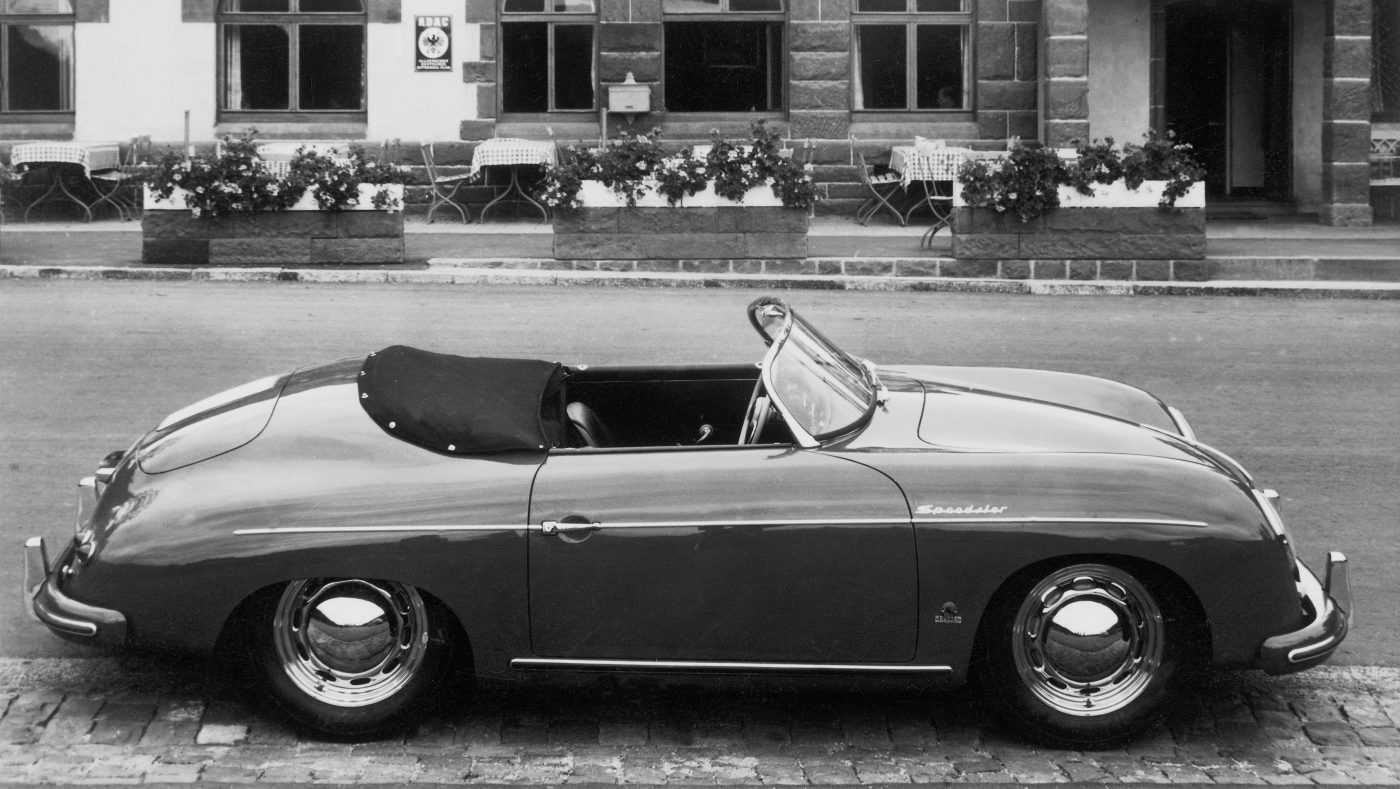
Porsche 356 Driving Experience & What to Expect
Driving a Porsche 356 is an experience rooted in connection, character, and charm—not outright speed or modern refinement. As Porsche’s first production model, the 356 delivers a uniquely analog driving experience that emphasizes balance, feedback, and mechanical engagement. Depending on the year and engine variant, you’ll find performance that ranges from leisurely to spirited, but never overwhelming. Instead of brute force, the 356 is about momentum, lightness, and driver involvement.
Handling is a standout feature for a car of this era. Thanks to its light weight (typically under 2,000 lbs), rear-engine layout, and independent suspension, the 356 has an agile feel that encourages smooth cornering and rewards skilled inputs. There’s a delicacy to its steering and braking that modern cars can’t replicate, and while the car requires more attention at the limit—especially on early swing-axle versions—it offers the kind of feedback that teaches you how to drive, not just how to go fast.
Power outputs vary from around 40 horsepower in early 1100cc cars to 95+ horsepower in later 1600SC and Carrera four-cam models. On paper, these numbers may seem underwhelming, but in practice, the power-to-weight ratio and the rev-happy nature of Porsche’s flat-four engine keep things engaging. Acceleration is brisk enough to keep up with traffic in later models, but it's best to think of the 356 as a momentum car—more about flow than thrust.
As a daily driver, a 356 is more of a niche proposition. The lack of modern amenities like air conditioning, power steering, or sound insulation can be charming on a weekend cruise but taxing in city traffic or long commutes. That said, many owners report surprising reliability, decent fuel economy, and strong parts support, making regular use entirely feasible if you're up for the character-rich experience. Later models like the 356C with disc brakes and stronger engines are especially usable in today’s world.
For weekend touring, backroad drives, or simply connecting with the essence of early Porsche engineering, the 356 is an absolute joy. Its simplicity, beauty, and analog character offer a pure, rewarding driving experience that modern sports cars have largely left behind. For buyers seeking something with enduring historical value and a uniquely mechanical soul, the Porsche 356 delivers in ways few other classics can.
Getting Real - Costs to Own & Maintenance
Ownership Costs & Maintenance of a Porsche 356: What to Expect
Owning and maintaining a Porsche 356 can be a rewarding experience, but it's important to approach it with the right expectations—especially when it comes to cost. While the 356 is generally regarded as one of the more robust and reliable classic European sports cars, it’s still a vintage machine with over half a century of age in every component. Costs can vary widely based on condition, model year, originality, and whether you’re doing the work yourself or relying on a professional Porsche specialist.
Maintenance & Service Costs
Routine maintenance on a Porsche 356 is relatively straightforward for a classic car, especially if you’ve owned vintage vehicles before. Oil changes, valve adjustments, and brake servicing are all simple jobs for a mechanic familiar with air-cooled engines, and many owners enjoy doing light maintenance themselves. That said, the labor rate at Porsche-specific shops can range from $100–$200/hour, and full services (including valve adjustment, oil change, and general inspection) can run $600–$1,000+. Rebuilding a 356 engine, if needed, can easily cost $10,000–$20,000, especially for four-cam Carrera models, which are notoriously complex and expensive to restore.
Parts Availability & Pricing
The good news is that parts availability for the Porsche 356 is excellent. Thanks to a large network of specialists and suppliers (such as Stoddard, Sierra Madre, and others), everything from engine components to body seals and trim can be sourced—often as new reproduction parts or high-quality OEM pieces. However, some items, like original trim pieces, instruments, or early NLA (no longer available) factory parts, can get very expensive. Expect to pay hundreds or even thousands for rare parts if you’re pursuing a concours-level restoration or keeping things period-correct.
Insurance Costs
Insurance for a Porsche 356 is typically very affordable if you use a classic car policy. These policies are based on agreed value and limited use, meaning you're only driving the car occasionally, not commuting daily. Depending on your location, driving history, and the value of the vehicle, expect to pay somewhere between $300 and $1,000 annually for comprehensive classic car insurance. That number can go up for higher-value variants like a 356 Carrera or pristine Speedsters.
Warranty? Forget It.
Naturally, there’s no factory warranty and no extended coverage available—though some restoration shops may offer limited guarantees on their work. That makes having a solid pre-purchase inspection and an understanding of ownership history even more critical to avoid expensive surprises.
Final Thoughts
A well-sorted 356 can be surprisingly affordable to keep running once the major restoration or refresh work has been done. However, if you’re starting with a project car or a car with unknown history, costs can escalate quickly. Preventive maintenance, careful use, and staying on top of minor issues before they become major ones are key to keeping costs manageable. For many owners, the 356 is a passion project, not just a car—and while that passion can come at a price, the return in joy and appreciation is more than worth it.
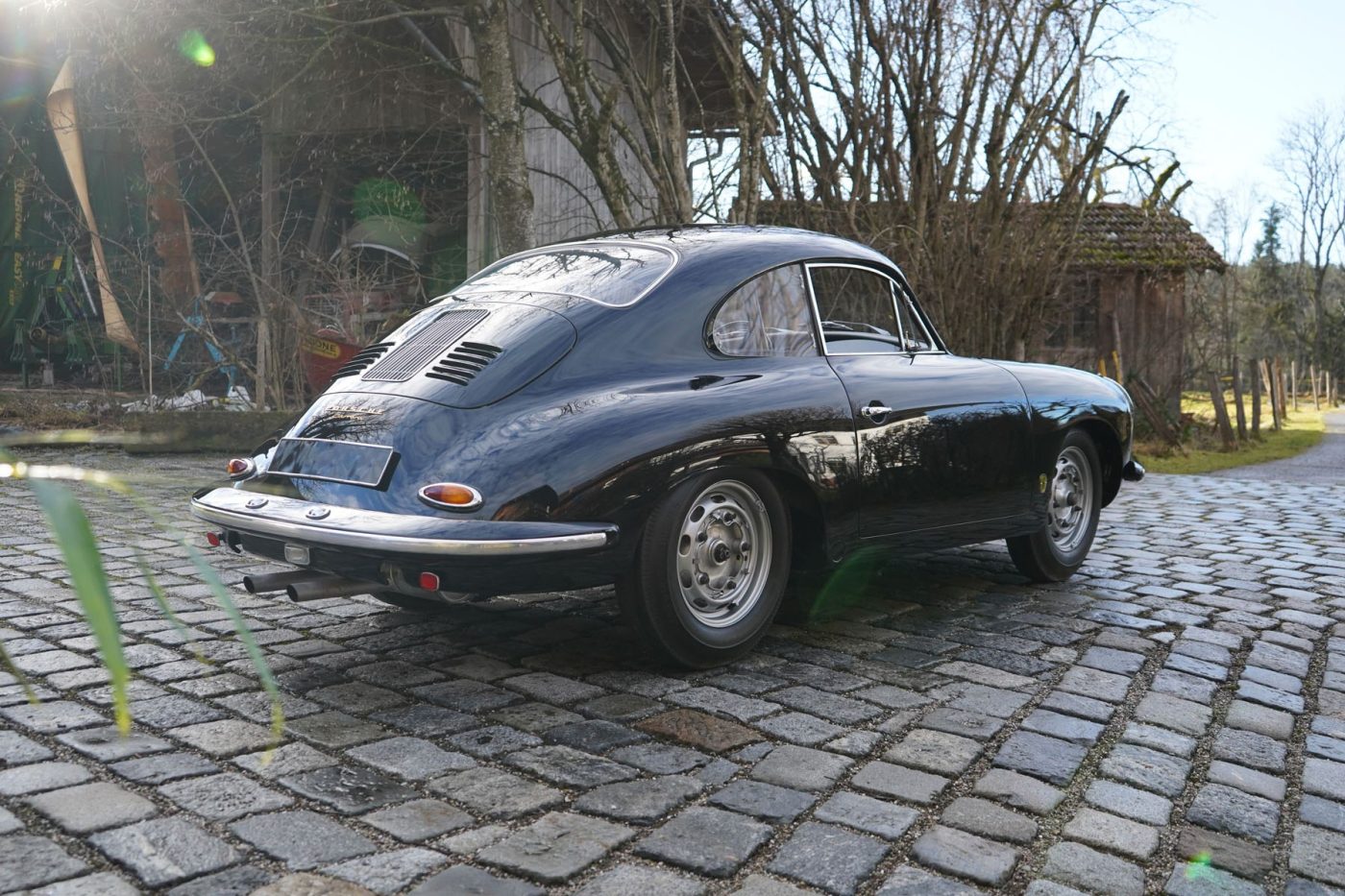
Other Key Buying Considerations
Ensuring Performance, Authenticity, and Long-Term Enjoyment
Purchasing a Porsche 356 requires more than just finding a car in good cosmetic condition - you must carefully evaluate its mechanical health, authenticity, and overall driving experience to ensure they’re making a sound investment. While the 356 is beloved for its lightweight handling, mid-engine balance, and engaging driving dynamics, it also comes with specific quirks, maintenance demands, and potential problem areas that need to be assessed before making a purchase. Understanding how the car performs mechanically, verifying its originality through documentation, and preparing for ownership costs will help buyers make an informed decision. Additionally, a proper test drive is essential to assess shifting feel, suspension health, and overall drivability, as the condition of these elements can significantly impact both enjoyment and value.
Rust: The #1 Enemy
Rust is far and away the most widespread and potentially devastating issue with any Porsche 356. These cars were built with ungalvanized steel and have numerous areas prone to rust, including the floor pans, rocker panels, battery box, front fenders, door bottoms, and torsion tube areas. Rust repair on a 356 is expensive and time-consuming, especially if it involves structural components. Many cars have undergone poor or amateur repairs in the past, masking serious corrosion under thick undercoating or paint. Always insist on a pre-purchase inspection by a 356 specialist who knows where to loo
Engine Wear & Misuse
The 356’s air-cooled flat-four engine is simple but delicate when neglected. These engines are prone to oil leaks, worn valve guides, timing gear wear, and low compression if not properly maintained. Many cars have been rebuilt—sometimes multiple times—but not always by qualified shops. Common issues include: worn main bearings and crankshafts due to low oil pressure, overheating damage from poor cooling system maintenance, misadjusted carbs or incorrect jetting on Solex or Zenith carburetors. Buyers should check for evidence of recent top-end work, compression/leak-down test results, and verify whether the engine has been rebuilt by a reputable Porsche engine builder.
Transmission Issues
The 4-speed manual gearbox in the 356 is known for its durability when treated properly, but synchromesh wear (especially 2nd gear) is a common issue. Many cars exhibit grinding when shifting from 1st to 2nd gear before the oil warms up. A full transmission rebuild can be costly due to the rarity of replacement parts and the labor involved. Also, worn clutch components or deteriorated linkage bushings can make shifting vague or difficult.
Electrical System Quirks
Early Porsche 356s used 6-volt electrical systems, which can be dim, unreliable, and hard to maintain. Many owners convert their cars to 12-volt systems for usability—especially to improve lighting and starter performance. However, poorly done conversions can cause electrical issues or overload components. Even stock 6V systems, when maintained properly, can work well, but it's something buyers need to assess and budget for if upgrades or repairs are needed.
Brake System Wear
356s came with drum brakes throughout most of their production run, with disc brakes arriving only on late cars like the 356C. While original drum brakes can function well when properly set up, they require regular adjustment and are sensitive to heat and fade. Poorly maintained systems can suffer from: worn wheel cylinders, contaminated brake shoes, leaky master cylinders, soft or brittle brake lines and disc brake conversions are available but can affect value and originality.
Fuel System Issues
Fuel tanks can corrode over time, and clogged fuel filters or deteriorating fuel lines are common. Many older 356s still run with mechanical fuel pumps, which may need rebuilding or replacement. Additionally, ethanol-blended fuels can wreak havoc on original fuel system components, so some owners upgrade to ethanol-resistant hoses and rebuilt carbs with modern seals.
Parts Fitment & Quality on Restored Cars
Because of the wide age range and variety of models in the 356 series, some cars—especially those restored on a budget—may feature incorrect parts, trim, or body panels. Misaligned doors, poor panel gaps, and incorrect interior components are not just cosmetic concerns; they can affect driving enjoyment and resale value. Buyers should be particularly wary of cars that were "restored to sell" without attention to correctness or quality.
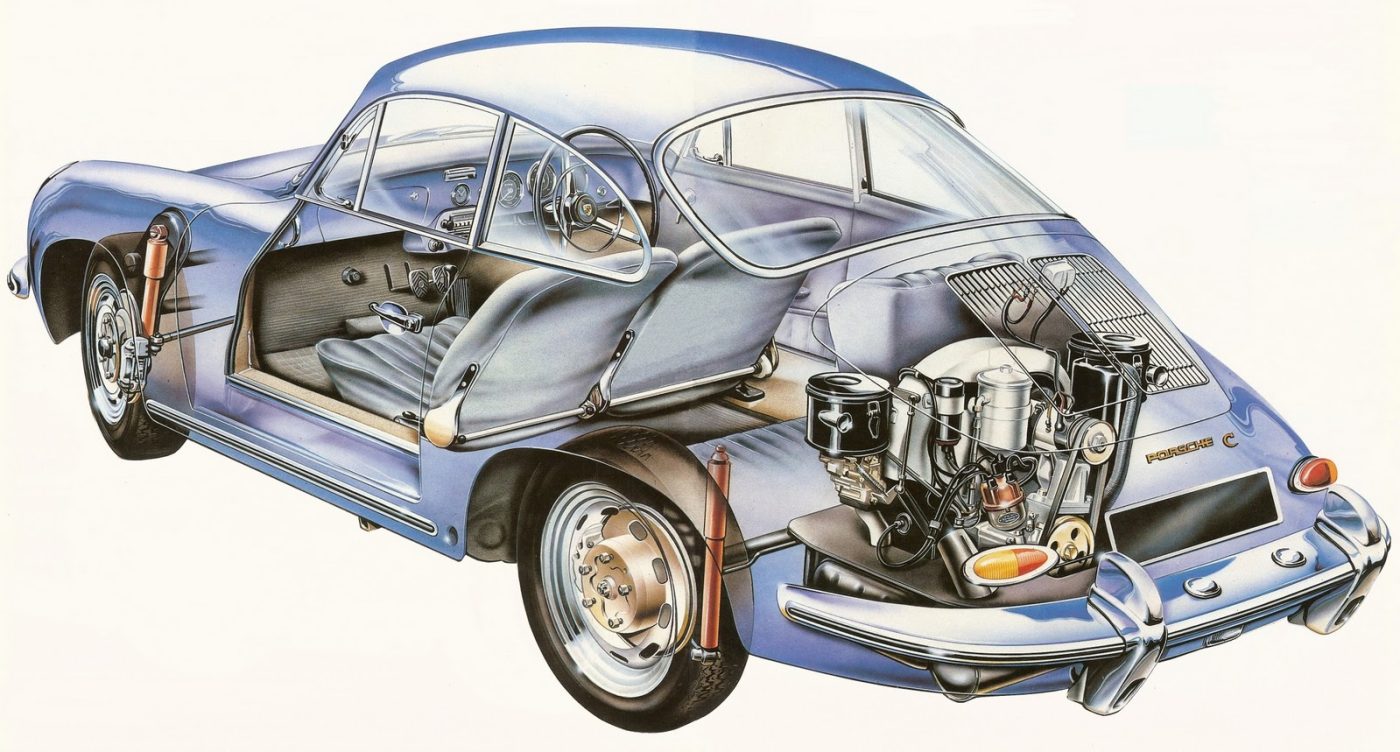
Common Porsche 356 Problems
What Buyers Should Know
The Porsche 356 is an automotive icon with a unique personality, known for its balance and minimalist design. while the Porsche 356 is one of the most beloved and iconic classic cars in automotive history, it comes with a unique set of common problems and maintenance realities that buyers need to be aware of. This is especially true given that even the newest 356 is over 55 years old.
1. Rust: The #1 Enemy
Rust is far and away the most widespread and potentially devastating issue with any Porsche 356. These cars were built with ungalvanized steel and have numerous areas prone to rust, including the floor pans, rocker panels, battery box, front fenders, door bottoms, and torsion tube areas. Rust repair on a 356 is expensive and time-consuming, especially if it involves structural components. Many cars have undergone poor or amateur repairs in the past, masking serious corrosion under thick undercoating or paint. Always insist on a pre-purchase inspection by a 356 specialist who knows where to look.
2. Engine Wear & Misuse
The 356’s air-cooled flat-four engine is simple but delicate when neglected. These engines are prone to oil leaks, worn valve guides, timing gear wear, and low compression if not properly maintained. Many cars have been rebuilt—sometimes multiple times—but not always by qualified shops. Common issues include:
Worn main bearings and crankshafts due to low oil pressure
Overheating damage from poor cooling system maintenance
Misadjusted carbs or incorrect jetting on Solex or Zenith carburetors
Buyers should check for evidence of recent top-end work, compression/leak-down test results, and verify whether the engine has been rebuilt by a reputable Porsche engine builder.
3. Transmission Issues
The 4-speed manual gearbox in the 356 is known for its durability when treated properly, but synchromesh wear (especially 2nd gear) is a common issue. Many cars exhibit grinding when shifting from 1st to 2nd gear before the oil warms up. A full transmission rebuild can be costly due to the rarity of replacement parts and the labor involved. Also, worn clutch components or deteriorated linkage bushings can make shifting vague or difficult.
4. Electrical System Quirks
Early Porsche 356s used 6-volt electrical systems, which can be dim, unreliable, and hard to maintain. Many owners convert their cars to 12-volt systems for usability—especially to improve lighting and starter performance. However, poorly done conversions can cause electrical issues or overload components. Even stock 6V systems, when maintained properly, can work well, but it's something buyers need to assess and budget for if upgrades or repairs are needed.
5. Brake System Wear
356s came with drum brakes throughout most of their production run, with disc brakes arriving only on late cars like the 356C. While original drum brakes can function well when properly set up, they require regular adjustment and are sensitive to heat and fade. Poorly maintained systems can suffer from:
Worn wheel cylinders
Contaminated brake shoes
Leaky master cylinders
Soft or brittle brake lines
Disc brake conversions are available but can affect value and originality.
6. Fuel System Issues
Fuel tanks can corrode over time, and clogged fuel filters or deteriorating fuel lines are common. Many older 356s still run with mechanical fuel pumps, which may need rebuilding or replacement. Additionally, ethanol-blended fuels can wreak havoc on original fuel system components, so some owners upgrade to ethanol-resistant hoses and rebuilt carbs with modern seals.
7. Parts Fitment & Quality on Restored Cars
Because of the wide age range and variety of models in the 356 series, some cars—especially those restored on a budget—may feature incorrect parts, trim, or body panels. Misaligned doors, poor panel gaps, and incorrect interior components are not just cosmetic concerns; they can affect driving enjoyment and resale value. Buyers should be particularly wary of cars that were "restored to sell" without attention to correctness or quality.
Final Thoughts for Buyers:
The Porsche 356 is an incredibly rewarding car to own, but condition and care are everything. The most common problems stem from age, neglect, poor restorations, or deferred maintenance. Cars that have been well-maintained or restored by knowledgeable specialists are far less likely to suffer from the issues above—and even if they do, those issues will likely have been properly addressed. As a buyer, you should always prioritize provenance, service history, and expert inspection before committing to a 356 purchase. Doing so can mean the difference between a joy-filled classic experience and a frustrating (and costly) restoration journey.
Buying A Porsche 356 FAQs
Here are all the questions we've received from readers considering a Porsche 356 for their garage
What to look for when buying a 356 in terms of authenticity & documentation
When buying a Porsche 356, authenticity and documentation are just as critical as the car’s physical condition. Given how valuable these cars have become—and how many have passed through multiple owners, restorations, and rebuilds—it’s essential to verify you're buying a genuine example with a traceable history. Here's what you should be looking for in terms of authenticity and documentation:
Matching Numbers and Factory Records
Start with verifying matching numbers—specifically the chassis number, engine number, and transmission number. These should correspond with what Porsche originally installed in the car when it left the factory. The best way to confirm this is to obtain a Certificate of Authenticity (CoA) or Porsche Production Specification document, which outlines the original build details including engine, transmission, color, interior, options, and delivery destination.
Matching numbers can dramatically affect value. Even if the car is in excellent condition, a non-matching engine or transmission may reduce collector appeal. However, well-documented period-correct replacements can still be acceptable to some buyers—especially if the original powertrain was lost decades ago.
Original Color and Options
Next, check whether the car’s paint color and interior trim match the original specification. Porsche offered some unique and rare color combinations, and a car in its original livery—even if it's been repainted—is often more desirable than one that’s been changed to a more modern or trendy hue. The CoA or Kardex will confirm this, and a skilled restorer can often tell whether the original paint lies beneath newer layers.
Also, be aware of factory options—things like headrests, electric clocks, chrome wheels, or even sunroofs can add value when present and correct. Many 356s were lightly optioned from the factory, so originality matters.
Body Authenticity and Rebody Concerns
Due to extensive rust or crash damage, some 356s have been rebodied or had major body components replaced. This can include replacing entire front or rear sections or even the floor pan and roof. While skilled work isn’t necessarily bad, it’s vital to know what’s original and what’s not. Look for consistent panel gaps, correct stampings, and accurate welding seams. Cars with heavily replaced sheet metal should be priced accordingly unless restored by a reputable specialist.
Watch for “Frankenstein” cars, where parts from different 356 variants (or even different years) have been mixed together during a restoration. For instance, a 356B body with 356A trim and gauges may look charming but will likely not pass muster with collectors seeking authenticity.
Paper Trail and Provenance
A well-documented ownership chain is a huge bonus. Look for:
A folder of maintenance records, invoices, and restoration receipts
Original sales documents, warranty booklets, or service stamps
Period photos, articles, or concours records if applicable
Previous registration records or titles, especially if the car spent time abroad
The more complete the history, the more confidence you can have in the car’s story—and that tends to correlate with both value and long-term desirability.
Final Expert Tip
If you're serious about buying a Porsche 356, hire a marque expert for a pre-purchase inspection. These specialists know where to look for telltale signs of originality vs. aftermarket substitutions and can spot subtle deviations that general mechanics might miss. When it comes to authenticity and documentation, a little extra effort up front can save you thousands—or prevent you from making a very expensive mistake.
Just how important are service records and ownership history?
Service records and ownership history are critically important when buying a Porsche 356—arguably more so than for most other vintage cars—because these details serve as the backbone of the car’s authenticity, provenance, and mechanical reliability. That said, how much they matter can depend on whether you’re buying the car as a collectible or a weekend driver.
For Collectors: Absolutely Essential
If you're considering a Porsche 356 as a collector or investment piece—especially a rare model like a Speedster, Carrera, or early Pre-A—service history and ownership documentation are non-negotiable. A car with complete records, matching numbers, and a known provenance (such as period photos, documented restorations, or long-term single ownership) will command significantly more value. It also gives buyers confidence that the car hasn’t been re-bodied, stolen, or poorly restored. In top-tier collector markets, lack of documentation can cost tens—or even hundreds—of thousands in diminished value.
For Drivers: Still Very Important, But With Flexibility
Even if you're buying a 356 as a fun weekend cruiser or occasional vintage tourer, service records still play a vital role in telling you how well the car was maintained. Unlike modern cars, the 356 requires regular mechanical attention—valve adjustments, carburetor tuning, brake checks, and more. Records of engine rebuilds, rust repair, electrical updates, and suspension overhauls give you insight into what has been done—and what may lie ahead. For example, a well-maintained “driver-quality” 356 with strong mechanicals but cosmetic wear is often a smarter buy than a freshly painted example with no supporting records.
Final Word
Regardless of your intent, a 356 with a clear service history and verifiable ownership trail will always be easier to sell, insure, and enjoy with peace of mind. In a car this old, paper matters. It’s your roadmap to the car’s past—and your insurance policy against expensive surprises.
Originality vs. Modified Examples: What’s More Valuable?
When it comes to Porsche 356 values, originality almost always trumps modified examples, especially in the eyes of collectors and investors. However, that doesn’t mean modified 356s are without value—far from it. The key lies in intent, quality, and context.
Originality: The Gold Standard
For collectors, originality is king. A 356 with matching engine and chassis numbers, original body panels, factory color combination, and authentic trim commands a significant premium. Even if it’s been restored, a “correct” restoration—one that uses period-appropriate parts and specs—is seen as more desirable than a modified car. Rare models like the Speedster, Carrera, or Pre-A 356s can see their values skyrocket when originality is intact, sometimes doubling or tripling compared to altered examples.
This focus on originality comes down to historical integrity and provenance. These cars represent an era, a philosophy of engineering, and a design legacy that enthusiasts and collectors want preserved. Originality also makes a car eligible for prestigious events like the Pebble Beach Concours d’Elegance or Mille Miglia re-creations, further boosting appeal.
Modified Examples: Attractive to Drivers, Not Purists
Modified 356s—whether “outlaws” with hot-rod engines, disc brakes, custom interiors, or paint—appeal to a different type of buyer: one focused on driving enjoyment over originality. These cars can be faster, more usable, and often more affordable than their stock counterparts. In fact, outlaw culture has become a respected niche, thanks to people like Rod Emory, who pioneered the idea of building performance-modified 356s that still honor the car’s spirit.
However, modified cars are generally worth less than properly restored original cars. The market penalizes them in resale value unless they were customized by a known builder or done to an exceptional standard. And once originality is gone, it can never be reclaimed.
If you're buying a 356 as an investment or collectible, go as original as possible—even patina is preferred over incorrect restoration. But if you're buying to drive and enjoy the car with some modern comforts or performance, a thoughtfully modified example may offer more fun per dollar. Just be realistic: modifications reduce value in the eyes of collectors, even if they enhance usability.
What are the most sought after Porsche 356 variants?
The most sought-after Porsche 356 variants are those that combine rarity, performance, historical significance, and design purity. While all 356s have become desirable classics, certain models stand out due to limited production, motorsport pedigree, or collector appeal. Here's a breakdown of the most coveted Porsche 356 variants:
1. 356 Carrera GS / GT Models
At the top of the list are the Carrera variants, especially the 356A Carrera GS, 356B Carrera GT, and the later 356C Carrera 2. These cars were powered by the exotic Fuhrmann-designed four-cam engines and were originally built for motorsport homologation. Their engines are complex and expensive to maintain, but they offer unmatched rarity and prestige. Carrera models regularly fetch six-figure and even seven-figure prices at auction.
Why sought-after? Motorsport pedigree, rare four-cam engine, limited production, and legendary status.
2. 356 Speedster (Pre-A and A)
The 356 Speedster, introduced in 1954, is perhaps the most iconic 356 variant. Initially a U.S.-market car intended to be a stripped-down, affordable racer, it featured a low, raked windshield, minimalist interior, and a removable top. Its raw driving feel and beautiful proportions have made it a blue-chip collectible. Early Pre-A Speedsters are particularly prized.
Why sought-after? Iconic design, lightweight simplicity, strong U.S. demand, and significant collector cachet.
3. 356A/356B Convertible D and Roadster
While not as famous as the Speedster, the Convertible D (1959) and later Roadster models offered more practicality while still keeping the open-top charm. They featured higher windshields, roll-up windows, and better weather protection, making them more usable than the Speedster while still desirable among collectors.
Why sought-after? Open-air motoring, better usability, transitional rarity between Speedster and cabriolet.
4. 356C Coupe and Cabriolet
The final iteration of the 356, the 356C (1964–1965), introduced four-wheel disc brakes and more refined engineering. While less rare than the earlier models, 356C Coupes and Cabriolets are in high demand for being the most developed and user-friendly 356s. Matching-numbers examples with factory options like the SC engine are especially desirable.
Why sought-after? Best driving refinement, disc brakes, ease of use, strong support in the enthusiast community.
5. Pre-A 356 (1948–1955)
The early “Pre-A” 356s, especially those built in Gmünd, Austria, are the holy grail for some collectors. These cars are ultra-rare, handmade in small batches, and represent the very beginning of Porsche’s automotive legacy. Their value is astronomical, and they are mostly found in museums or high-end collections.
Why sought-after? Historical significance, hand-built rarity, early Porsche heritage.
If you’re looking for a collectible investment, aim for a Carrera, Speedster, or Pre-A. If you want a great-driving classic, the 356C or 356B Super 90 models are smart buys. And if you're chasing the romantic Porsche experience with an open top, the Convertible D and Roadsters strike a great balance. As with any classic, condition, originality, and documentation are key in determining ultimate desirability and value.
What are the underrated Porsche 356 variants buyers should consider?
While the Porsche 356 Speedsters, Carreras, and Pre-A examples grab the headlines (and the high auction bids), there are several underrated Porsche 356 variants that savvy buyers and enthusiasts should consider. These models often offer the same fundamental Porsche charm and driving experience, but at more accessible prices—or with unique historical or mechanical traits that make them special. Here's a breakdown of some of the most underrated Porsche 356 variants:
1. Porsche 356B Coupe (T5 and early T6)
The 356B Coupe—especially the T5 generation (1959–1961)—has long flown under the radar. While not as visually delicate as the earlier A-series or as modern as the C-series, T5 Coupes offer a sweet spot in terms of affordability, reliability, and classic 356 aesthetics. The early T6 Coupes (1962–63) added functional updates like twin grilles and external fuel filler necks, while maintaining the upright classic look.
Why it's underrated: Overshadowed by Speedsters and C models, but mechanically solid and still has that vintage Porsche charm. These are some of the best-driving bargains in the 356 world.
2. Porsche 356B Super 90
The Super 90 engine was a performance upgrade available across 356B and early 356C models, offering around 90 horsepower, making it a real step up in speed and refinement. It’s not a Carrera, but it was the top non-Carrera engine option at the time. Because it doesn’t wear the “Carrera” badge or fetch the same prices, it often gets overlooked—yet it's a seriously rewarding drive.
Why it's underrated: Near-Carrera performance without the Carrera price tag. Enthusiasts love it, but casual buyers often pass it by.
3. Porsche 356C Coupe
The 356C is the most modern and refined of the series, with four-wheel disc brakes, improved suspension, and stronger engines (particularly in the SC trim). While the Cabriolet versions are more expensive and collectable, the Coupe versions—especially non-SC models—can be relative bargains that deliver an excellent ownership experience.
Why it's underrated: Best driving dynamics of the 356 lineup, excellent parts support, and still a “real” 356. Great for weekend touring or regular use.
4. Porsche 356A Coupe
The 356A Coupe—particularly in normal trim—is often overlooked in favor of the more rare Speedster or four-cam cars of the same era. But it captures the early Porsche aesthetic and mechanical simplicity, with a lovely balance of vintage styling and daily usability. It’s also significantly more affordable than its open-top siblings.
Why it's underrated: Early 356 feel and shape at a fraction of Speedster prices. For buyers who value design purity and historical feel over badge prestige.
5. Porsche 356 "Outlaws" and Light Restomods
While originality reigns supreme for collectors, tastefully modified 356s—often called “Outlaws”—can offer tremendous fun, style, and value. These cars typically feature upgraded suspension, disc brakes, modern engine internals or swaps, and visual tweaks. While they won't win Pebble Beach, they often drive better than factory-spec cars and are generally priced below their concours-grade counterparts.
Why it's underrated: Great for driving enthusiasts who care more about fun and performance than concours correctness. Some builds are exceptionally well done and offer superb value.
Final Thoughts
Buyers looking for a Porsche 356 shouldn't dismiss these variants just because they aren't the headline-grabbers. Whether you're after driving enjoyment, long-term reliability, or smart investment upside, these underrated 356 models offer real-world usability and classic charm without the six-figure buy-in. They represent a chance to own a piece of Porsche history—without following the herd.


